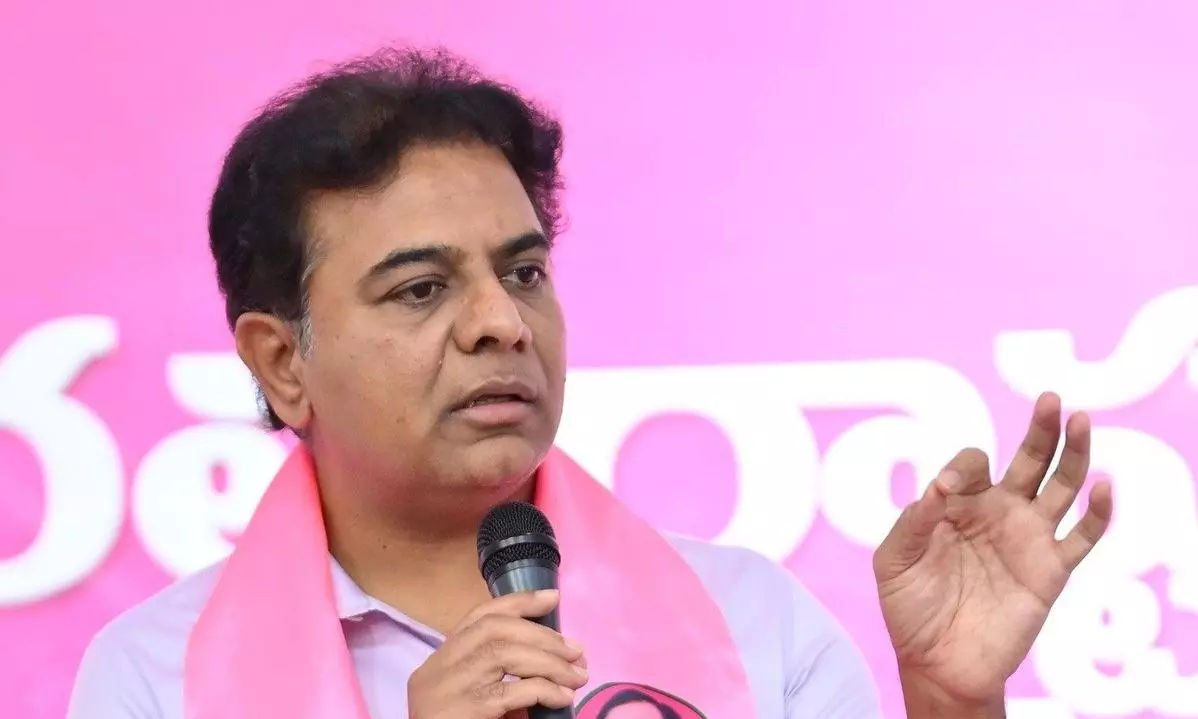KTR's Medigadda Solution of Cofferdam Dangerous, Reckless: Expert
After KCR, KTR appears to have taken the mantle of dam designer;

Hyderabad: Former chief minister and BRS president K. Chandrashekar Rao had famously claimed while in power, many times, that he “designed” the Kaleshwaram Lift Irrigation Scheme after a “lot of study” and consultations with experts. And now, with the Kaleshwaram project stricken with multiple problems, some of them serious, at its three key barrages, K.T. Rama Rao seems to have taken over the mantle of a dam designer, suggesting a “cofferdam solution”, which experts warned against.
The partially damaged Medigadda barrage, whose foundations gave way in one of its 11 blocks, has become the bedrock for the BRS’ argument that there was nothing really seriously wrong with the barrage or the rest of the Kaleshwaram project, and that the damage was nothing to lose sleep over.
In fact, the solution is fairly simple, claimed Rama Rao at a presser on Tuesday, declaring that all that was required was to build a cofferdam to impound water, and then lift this water from Medigadda to the upstream Annaram barrage, and from there pump it to the rest of the project’s systems.
And to prove that all was well with Medigadda, except for some cracks and damage to just three piers in one block of the barrage, Rama Rao is all set to lead a large team of BRS legislators, MPs and leaders to Medigadda on March 1.
This “cofferdam solution”, Rama Rao said, was based on inputs from irrigation experts, adding that this could be done quickly and should be done before the monsoon sets in.
He said that the world over, when constructing or repairing irrigation projects, cofferdams are built, and in Medigadda’s case too, this must be done to enable lifting of water from there to the upstream Annaram barrage.
While Rama Rao’s solution was picked up quickly by other BRS leaders who repeated it, engineering experts have called this proposal “reckless, and dangerous” and one that could result in the barrages getting destroyed further.
“The reality is Annaram is in a worse shape than Medigadda with Annaram’s downstream aprons and flood dissipation blocks destroyed. And the recent leak was a really bad one and now that there is no water there, it appears ok. But the fact is if water is stored there, then it will be a case of plugging one leak only to find another one springing up, threatening the whole structure,” an expert with decades of engineering experience in the irrigation department said.
Incidentally, the designs of all three Kaleshwaram barrages — Medigadda, Annaram, and Sundilla — are the same.
“Irrespective of who says what, no storage of water must be allowed at any cost at any of these barrages. This will spell their doom as stored water pressure will lead to more scouring hitting the downstream piles that will lead to cavities under the foundations. The only thing that should be done is to leave the gates open, let the water flow through as it comes,” an engineer who was part of the construction of the Medigadda barrage said.
“A complete redesign of the downstream structures is required and when this is done, the upstream water pressures and behaviour must be taken into account which means work may be required on the upstream sides of the barrages too. Only when this is done can the barrages get some safety,” the engineer said.

